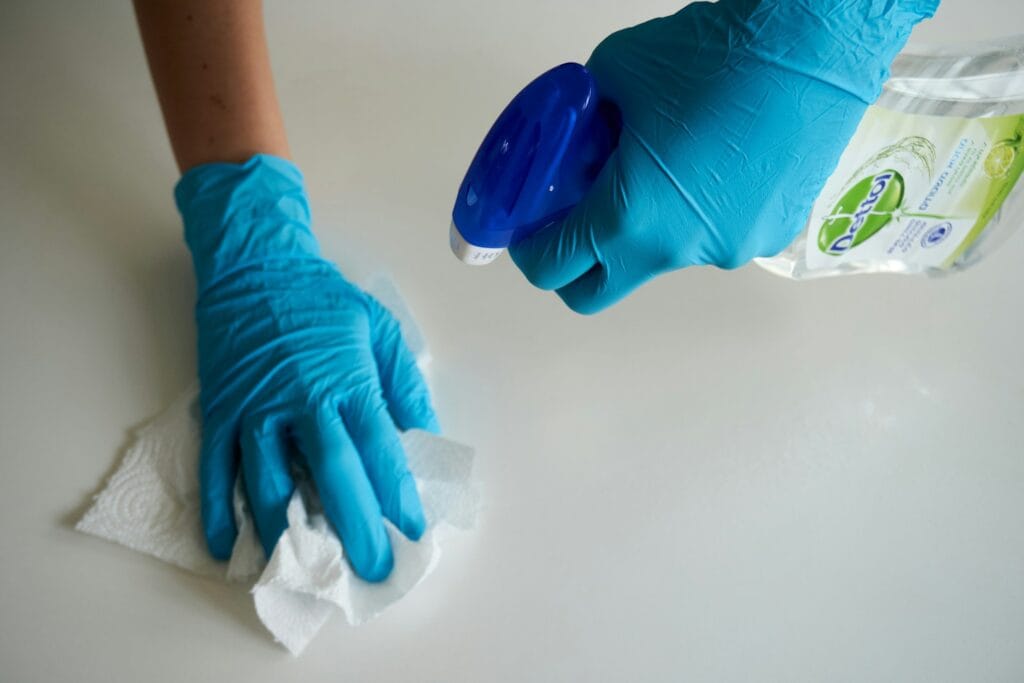
In the world of global workwear trade, many new importers chase the next “cheaper factory.”
But the most successful distributors — the ones who grow from one container a year to full regional dominance — all share a different mindset: they build long-term supplier partnerships.
A strong relationship with your Chinese manufacturer doesn’t just mean stable prices.
It means faster lead times, better quality control, access to new product designs, and even credit terms that help you scale.
This article explores why loyalty beats switching, how to build trust step by step, and how real distributors in Africa and the Middle East have turned first-time orders into multi-year partnerships.
Long-term supplier relationships lower costs, improve consistency, and unlock custom product development.
Distributors should move beyond one-off orders by signing annual cooperation contracts, maintaining transparent communication, and building mutual trust through small-to-large order scaling.
A reliable supplier becomes not just a vendor — but a growth partner.
🤝 Why Long-Term Cooperation Beats “Factory Hopping”
1. Price Stability and Predictable Costs
Changing factories every shipment may save a few cents at first, but in the long run, it leads to:
- Re-sampling and re-testing costs
- Uncertain lead times
- Inconsistent fabric quality
When you establish continuity with one or two trusted factories, you gain price stability and priority in raw material purchasing — especially during high-demand seasons like Q4 or Ramadan procurement peaks.
🟩 Pro Tip: Ask your supplier for a “fixed price framework” for 6–12 months. This protects you from sudden cost hikes due to currency or material changes.
2. Better Quality Control Over Time
A long-term supplier learns your quality expectations, branding needs, and end-user markets.
Instead of re-explaining each order, you both operate from shared experience — minimizing production errors.
| Supplier Type | First-Time Vendor | Long-Term Partner |
|---|---|---|
| Understanding of your product | Basic specs only | Knows your standards & market |
| Quality monitoring | Reactive | Proactive, self-inspects |
| Lead time reliability | Medium | High priority |
| Problem solving | Defensive | Cooperative |
“The second and third orders always go smoother — that’s when true partnership begins.”
3. Credit Terms and Financial Trust
In the early stages, you’ll likely pay 30% deposit and 70% before shipment.
But after a few successful collaborations, suppliers often offer:
- Net-30 or Net-60 payment terms
- Reduced deposit (10–20%)
- Extended production priority
This financial flexibility helps you reinvest cash flow into marketing, warehousing, or local distribution expansion.
4. Co-Development and Customization Opportunities
Long-term cooperation opens doors to joint development — meaning you can co-create:
- Branded labels & private logos
- Tailor-made fabric colors
- Market-specific modifications (lighter fabrics for Africa, flame-retardant for the Gulf)
Instead of just buying stock, you start building your own brand identity.
🧵 Example: A Saudi importer co-developed a reflective vest line with a Chinese supplier. Within two years, it became the best-selling safety vest in Riyadh’s construction markets.
🌍 Case Study: 7 Years of Partnership Between Egypt & China
Case: Cairo, Egypt — Workwear Distributor & Ningbo Manufacturer
In 2017, an Egyptian distributor placed his first trial order of 1,000 coveralls.
Back then, communication was difficult, and there were small issues with sizing and labeling.
But instead of switching factories, he chose to improve communication — sending detailed photos, corrections, and feedback after every batch.
By 2020, trust had formed. The supplier:
- Offered exclusive pricing on certain styles
- Produced custom branding with Arabic labels
- Assigned a dedicated QC team for his shipments
By 2024, they were working under a yearly framework contract worth over $1.2 million in total volume.
Even during COVID-19 logistics disruptions, the factory prioritized his orders, ensuring no stockouts while competitors were still waiting at port.
“At first, I was just another buyer. Now, they treat me as part of their production schedule. That’s the difference trust makes.”
— Ahmed, Cairo Distributor
🧰 Practical Tools: Building Supplier Trust Step-by-Step
📋 Step 1: Start with a Trial, but Document Everything
Use a Supplier Evaluation Form to record:
- Communication speed
- Sample accuracy
- Packaging & labeling precision
- Problem-solving attitude
Keep this record for every factory you try — it’s your long-term supplier “scoreboard.”
📋 Step 2: Communicate Like a Partner, Not a Policeman
Don’t just send complaints — share market insights:
- “Our customers prefer lighter fabrics this season.”
- “We’re seeing strong growth in reflective jackets.”
Such feedback helps suppliers improve products and builds mutual respect.
📋 Step 3: Sign an Annual Cooperation Agreement
Once you’ve completed at least 3 successful shipments, propose a 12-month framework contract that covers:
- Expected annual volume
- Price adjustment mechanism (if fabric cost rises)
- Quality dispute resolution method
- Delivery priority clause
✍️ Bonus: Include a “new product development” section. Suppliers love long-term buyers who help them innovate.
📋 Step 4: Visit or Video-Audit the Factory
If possible, visit once a year or schedule a video tour.
This shows commitment — and allows you to verify real production capacity.
Many suppliers respond by offering:
- Exclusive product previews
- Better credit terms
- Priority in material allocation
📈 Relationship ROI: Why Loyalty Pays
| Aspect | Short-Term Buying | Long-Term Partnership |
|---|---|---|
| Price per unit | May be cheaper initially | More stable and predictable |
| Quality | Varies by batch | Consistent and improving |
| Communication | Transactional | Collaborative |
| Customization | Limited | Fully supported |
| Problem-solving | Blame-based | Joint improvement |
| Financial benefits | None | Credit terms, priority service |
💡 Conclusion: Loyalty builds leverage. Every repeat order strengthens your position — and your supplier’s willingness to invest in your success.
🧩 Communication Template: Annual Partnership Email
Below is a sample structure you can copy when establishing or renewing cooperation.
Subject: Annual Partnership Plan 2025 – [Your Company Name]
Dear [Supplier Name],
We appreciate our continued cooperation during the past year.
For 2025, we plan to:
- Order approximately [X] units of workwear across [Y] categories.
- Focus on maintaining consistent quality standards.
- Explore co-development of a new reflective or FR line.
Please share your updated pricing proposal and any new catalog items.
We’d also like to discuss annual volume discounts and delivery timelines.
Looking forward to another successful year together.
Best regards,
[Your Name]
[Your Company]
[Your Contact Information]Conclusion
Long-term supplier partnerships aren’t built overnight — they’re earned through consistency, transparency, and mutual benefit.
For distributors across Africa, the Middle East, and Latin America, this approach turns transactions into trust, and suppliers into allies. Every strong brand in the PPE and workwear sector is built not just by marketing — but by long-term, dependable relationships.
“If you want to grow, stop changing factories. Start growing together.”
📩 Need a supplier evaluation template or annual contract draft? Email: [email protected]
🌐 Website: www.workwearsolutions.net
Zion Zhang
Recent Posts
 How to Build a Local Distribution Network That Works2025年10月10日In emerging markets across Africa, the Middle East, Central […]
How to Build a Local Distribution Network That Works2025年10月10日In emerging markets across Africa, the Middle East, Central […] Choosing the Right Sales Channels for Workwear in Emerging Markets2025年10月10日In fast-growing markets across Africa, the Middle East, […]
Choosing the Right Sales Channels for Workwear in Emerging Markets2025年10月10日In fast-growing markets across Africa, the Middle East, […] Costing & Profit Margins: Calculating the Real Numbers2025年10月9日When importing workwear or PPE from China, the biggest […]
Costing & Profit Margins: Calculating the Real Numbers2025年10月9日When importing workwear or PPE from China, the biggest […] Logistics & Payment Methods: Reducing Risk in Cross-Border Trade2025年10月9日If you’ve ever imported workwear or PPE from China, you […]
Logistics & Payment Methods: Reducing Risk in Cross-Border Trade2025年10月9日If you’ve ever imported workwear or PPE from China, you […] Certificates & Compliance: Spotting Fakes and Staying Legal2025年10月9日Certificates & Compliance: Spotting Fakes and Staying […]
Certificates & Compliance: Spotting Fakes and Staying Legal2025年10月9日Certificates & Compliance: Spotting Fakes and Staying […] Quality Control & Pre-Shipment Inspection: Avoiding Expensive Surprises2025年10月7日In international workwear trade, one of the most painful […]
Quality Control & Pre-Shipment Inspection: Avoiding Expensive Surprises2025年10月7日In international workwear trade, one of the most painful […]
CONTACT US
- Feel free to contact us any time. We will get back to you as soon as we can!
- +86-17303331701
